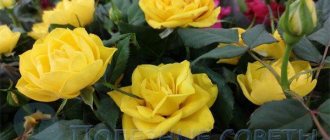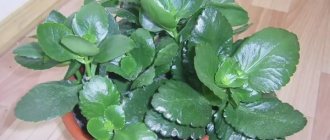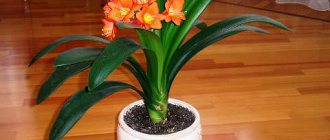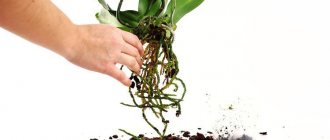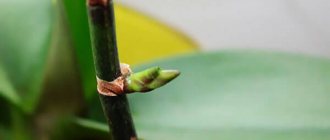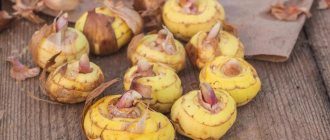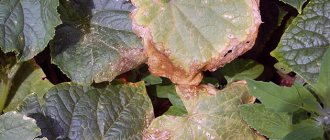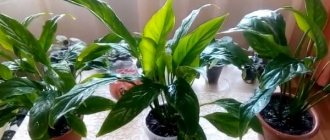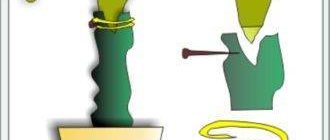To solve the problem of why hydrangea does not bloom, an integrated approach is needed. The reason is not always due to the freezing of the buds; often the owners of the site themselves make annoying mistakes. Only if all the rules of care are followed will the cultivated plant annually delight you with the decorative appearance of its inflorescences.
On what shoots does hydrangea bloom?
If the hydrangea does not bloom, you first need to find the reason; the reasons may be different for different types. Large-leaved (garden) hydrangea (Hydrangea macrophylla), the most common species, blooms on last year's shoots; flower buds begin to appear in late summer, which will develop the following year. Hydrangea paniculata, on the contrary, blooms on the shoots of the current year; the flowers develop only in the spring. This difference is of great importance when caring for the shrub and is a hint as to why the hydrangea does not bloom.
Why garden hydrangea does not bloom, but only leaves grow
To understand why hydrangea does not bloom, but only produces foliage, it is necessary to analyze several aspects: the place and method of planting, the quality of watering and added fertilizers. Typical gardener mistakes:
- lack of measures to prepare for winter or violation of general requirements;
- incorrect pruning of branches;
- mistakes in seasonal care.
Why garden or indoor jasmine does not bloom and what to do
Some of the listed shortcomings can be eliminated and save the flower, others lead to the death of the stems and the death of the bush.
Frozen buds
Unexpected spring frosts harm ornamental crops. If a young plant experiences seasonal temperature changes, there will be no flowering. The only solution is to insulate the bush:
- mulch the soil with sawdust and peat;
- build a “house” from branches (for small bushes);
- cover with a box and non-woven material (often used for indoor plants);
- next spring, hydrangea is shaded and good complementary feeding is provided.
Attention! Dead buds, leaves, and branches are cut off. The pruning shears must be sharp and treated with a disinfectant. Pruning is done at an angle. Hemp is treated with a special product.
Irrigation irregularities
Hydrangea loves abundant watering - 20-30 liters are needed per bush per week (every 3-4 days). If the summer is hot and dry, the frequency of watering is increased. Moisturizing is carried out every day or every other day. Additionally, spray the leaves with a spray bottle. Mulching helps retain moisture in the soil.
If the soil at the planting site is clayey, the water stagnates. At the same time, drainage is formed. Loosening the soil will not give the usual result due to the high sensitivity of the roots. They are hilled no deeper than 10 cm.
Watering is the most important component of hydrangea care.
Wrong landing site
The landing site is chosen in advance (before purchase). Hydrangea, regardless of the variety, loves good lighting, but does not accept direct sunlight. A little partial shade is acceptable. The best option would be a place near a fence or walls.
Note! You should not plant hydrangea next to tall, strong trees. They create excessive shading and deprive the bush of moisture.
In open areas, the ornamental crop will not bloom for long. Large-leaved varieties are planted only in the shade. In addition to lighting, the strength and direction of the wind are taken into account. Hydrangea does not like strong gusts from the northern and eastern directions - they weaken and break the stems.
Excess or deficiency of nutrients
Mineral fertilizers are necessary for every ornamental plant. A lack of nutrients, as well as an excess, leads to poor growth, lethargy, lack of flowering, and disease.
Additional Information! Nitrogen fertilizing is especially harmful in the second half of summer and autumn. The substance accelerates vegetative processes. In this case, the hydrangea does not have time to prepare for wintering, and then dies.
Nitrogen compounds are applied only in the spring. In summer and autumn, the mixture should contain mainly phosphorus and potassium fertilizers. They activate the ovary, which promotes the development of inflorescences.
Fertilizer is carried out in the fall
Regardless of the purpose of feeding, it is important to follow the recommendations for use indicated on the packaging. Basic moments:
- the first spring feeding of the roots should consist mainly of nitrogen components with the addition of potassium, phosphorus and other minerals;
- fertilizers are dissolved in clean water, the usual dosage is 10 liters per 1 square meter. m of soil;
- the second feeding is applied during the formation of buds - potassium plus phosphorus, nitrogen is allowed in small quantities (so as not to create a deficiency of the element);
- third stage – flowering time, potassium-phosphorus feeding;
- fourth - autumn, after flowering, nitrogen-free mixtures with potassium and phosphorus.
You can use special ready-made formulations for hydrangeas (selected according to variety and stage of growth).
Improper pruning of shrubs
Pruning is a mandatory step in the process of caring for tree hydrangea. It is impossible to get beautifully growing inflorescences on randomly located stems. There are varieties that do not require autumn pruning. Gardeners often remove stems containing flower buds. This flower will not bloom next year.
Some varieties grow quickly, with most of the branches going inside the bush. If you do not thin out, the inflorescences will not be able to develop normally and will be small and inconspicuous. Every 5 years they do anti-aging pruning - buds do not appear on old branches.
Damage by diseases or pests
Hydrangea is practically immune to diseases. Lack of aroma does not attract bees. Insect pests rarely appear on bushes. Most often, chlorosis appears on the leaves of the bush - the green color disappears, the leaves become pale, dirty yellow, spotted, and quickly fall off. Inflorescences become small or not formed at all. Treat the bushes with a solution of iron sulfate (including those on which the disease has not yet manifested itself). Fungal infections are treated with Bordeaux solution and copper sulfate.
Diseases do not often bother tree hydrangea
Pests of hydrangea include slugs, spider mites and aphids. If the bush is strong, insect spread will not occur. In most cases, young petiole plants or those weakened after illness suffer.
Note! Excessive pruning can weaken the bush. If it is necessary to remove a significant number of stems, the procedure is carried out in several stages.
Planting an already blooming hydrangea seedling
Hydrangeas do not tolerate transplantation well. The adaptation period may last for the entire season, therefore, existing inflorescences will fall off and new ones will not appear. Difficulties arise for the following reasons:
- too much or too little fertilizer at the stage of growing a seedling;
- moving a flower from acidic soil to slightly acidic or alkaline;
- if the bush has a closed root system (grew in a pot), the earthen ball is not removed.
It is important to transplant the seedling correctly and achieve optimal microclimate parameters. It is necessary to make a planting hole in advance and provide shade.
Weak root system
The problem arises when transplanting, lack of nutrients, improper care or proximity. Determine the problem by lightly pulling the bush - weak roots will quickly separate from the soil, tear, and break. To correct the situation, it is necessary to find out the reason for the weakening of the root system, add fertilizers relevant to the current stage of growth, and mulch the soil.
Kidney freezing
Large-leaved hydrangea often does not bloom due to freezing. In the fall, flower buds appear on the shoots of the current year, which must survive the winter. However, flower buds are quite sensitive, and if frost occurs quickly (for example, in late September or early October), the buds may freeze and not develop in the spring.
If only the flower buds freeze, the bush will become covered with leaves and will look beautiful, but will not bloom. In this case, you need to fertilize and wait until next year. If the entire plant freezes, the bush will not develop at all in the spring and will have to be thrown away. To avoid freezing, you need to insulate the bushes. The roots are covered with leaves or bark; a hood made of agrofibre can be put on the shoots.
Although bigleaf hydrangea can be grown successfully outdoors, the most valuable varieties can be planted in large containers. For the winter, the containers are placed in a (necessarily) unheated room (annex, garage), watering every 2-3 weeks.
Features Overview
The decorative properties of hydrangea are valued by landscape designers and amateur gardeners. This perennial deciduous shrub has a beautiful crown and blooms for a long time. Grown in different climate zones, including cold regions.
Hydrangeas are represented by numerous varieties (more than 800), which are grouped by type:
- tree-like;
- petiolate;
- large-leaved;
- ground cover;
- liana-shaped;
- serrated.
The shape of the flower depends on the species: panicle, ball, scutellum. Dimensions can reach 25 cm in diameter, 30 in length.
The spherical bud consists of many small buds. Photo: attuale.ru
Errors in care
Another reason why hydrangea does not bloom is two mistakes in care, insufficient fertilizer and too little water. In both cases, the plant can produce buds and even develop some flowers, but the inflorescences will be anemic and small, withering and turning yellow in the summer. If the bushes are not watered regularly, daily, the plants are unlikely to survive until the next season.
Fertilizer is also important. Flowering shrubs need a lot of nutrients. Because the shrub has large leaves and produces many huge inflorescences, it requires a lot of nutrients. You should fertilize 3-4 times a year if you use granular fertilizer or every second watering if you use water-soluble fertilizers.
The use of fertilizers is closely related to the resistance of the shrub to frost!
Spring and summer. In spring, you can apply complex fertilizer Agricola Aqua. A plant strengthened with nutrients is more resistant to adverse environmental factors, grows faster and produces more flower buds.
Autumn. From mid-July you need to stop using nitrogen fertilizers. Nitrogen stimulates plants to create new shoots and green mass; hydrangeas should be ready for winter rest from August.
However, it is worth using special autumn fertilizers to expand the root system, so that the plants will be better prepared for winter.
Features of growing hydrangea
For the normal growth of this flower in our climate, good care and adherence to agricultural technology are required. When developing rules for growing hydrangea, you need to take into account the following features:
- In bright light, the petals often fade, so it is better to plant the shrub in light partial shade.
- The hydrangea plant is a very moisture-loving crop; it is not able to develop normally without timely watering.
- The composition of the soil greatly affects the color of the inflorescences and the vigor of growth.
- Different varieties require special pruning approaches.
- Overfeeding with organic matter often leads to vigorous growth at the expense of flowering.
- Hydrangea is able to quickly recover after freezing, but in cold climates it needs shelter.
Trimming
Pruning is necessary to help hydrangeas develop and produce beautiful flowers. But pruning is also a direct reason for the lack of flowering. The reason is simple: paniculata hydrangea blooms on the shoots of the current year. If you prune the shoots too much during spring pruning, flowers will not appear; you will have to wait until the next season.
Proper pruning of hydrangea is to shorten the shoots to the fourth bud in the fall. The remaining buds will produce new branches. You can also do formative pruning and give the bush the desired shape, but flowering may be weakened. If the bush has grown too much, pruning is needed.
Since hydrangea inflorescences are often used for dry bouquets, be careful with pruning. In order for the plant to bloom next year, only the inflorescence itself with a short 3-4 cm stem is cut off.
How to make hydrangea bloom blue?
The color of the inflorescences of a given crop depends not only on the variety; the composition of the soil or fertilizing significantly influences the decorative appearance of the plant. At a pH of 5.5-6.5, flowers are produced predominantly with a purple tint, and at a pH of 7.5, the buds become almost bright pink. A bluish tint to the inflorescences can be obtained on varieties with white petals at pH values of 4.5 and below.
There are several ways to make hydrangea blue:
- Dilute the top layer of soil near the hydrangea with pine bark or acidic peat.
- Use peat and pine needles mulch.
- When watering, use aluminum alum (3 g/l of water) once a week, pouring up to 10 liters under the bush.
- Use aluminum sulfate (500 g/m²).
- Irrigate with rainwater diluted with lemon juice until the soil pH reaches the required level.
Remontant varieties
‹ Left Right ›
Remontant varieties of large-leaved hydrangea have a distinctive feature - the shrub blooms twice a year. The first bloom is in the spring (on last year's shoots) and the second begins in late summer or autumn (on the current year's shoots).
Varieties of large-leaved hydrangea blooming on the shoots of the current year:
All Summer Beauty, Dooley, Endless Summer, Generale Vicomtesse de Vibraye, Lilacina, Mariesii Variegata, Madame Emile Mouillere, Nikko Blue, Penny Mac, Bloom Struck, David Ramsey, Decatur Blue, Oak Hill, Twist-n-Shout and Veitchii.
If you find it difficult to achieve flowering, we recommend varieties that bloom on the current year's shoots, the reliable panicle hydrangea (Hydrangea paniculata), varieties:
- Phantom - with huge white-cream inflorescences.
- Limelight - with initially white, then light green, pinkish inflorescences at the end of flowering.
- Grandiflora is a variety with large white flowers.
- Pink Diamond is a good variety with pink flowers.
- Kyushu is a variety with conical white inflorescences.
When should hydrangea bloom?
There are several varieties of this beautiful crop, growing in the form of trees, vines, and compact bushes. Hydrangea flowering begins in different months, its timing and duration depend significantly on the variety:
- Paniculata hydrangea
- flowering time is up to 3.5 months. from mid-June. - Tree variety of hydrangea
- flowering time is up to 4 months from the beginning of June. - The large-leaved variety of hydrangea
has a flowering period from July until frost.
Diseases and pests
A very common reason why hydrangea blooms poorly is disease. Sometimes even established buds begin to fall off if the plant becomes sick. The most common cause is fungi: powdery mildew, leaf spot or gray mold. A plant infected with fungal pathogens does not develop, growth and flowering slow down. You need to react immediately by spraying the plant with fungicides.
Often the cause of weakened flowering is pests, especially aphids. The feeding of aphids on the leaves is immediately visible; if flowers appear, they are small and often distorted. Tiny aphids can cause a lot of damage. It is better to pre-spray the bush for prevention.
Shelter for the winter
In severe frosts, flowering buds can easily freeze. Such buds will no longer be able to produce flowers, and all that remains is to cut them off along with the damaged stems. To prevent this from happening, the plants are covered for the winter.
Shelter for the winter
- You should tie the hydrangea stems together and cover them with sawdust. After that all that remains is to sprinkle them with earth.
- If it is possible to cover the hydrangea with a non-woven covering material, then you should take advantage of this opportunity.
- Coniferous branches would be a good covering material. They will not only save the bushes from freezing, but will also increase the acidity of the soil, which hydrangea bushes love.
- Plants can be covered even if all the leaves have not yet fallen off. Neither pests nor diseases overwinter on hydrangea leaves.
Hydrangea care to activate flowering
If the plant grows in a comfortable place for more than 5 years, does not suffer from diseases and refuses to bloom, stimulation is required.
Garden species:
Use mineral fertilizers and mixtures for hydrangeas. Feeding can be done according to a schedule or occasionally.
Pokon - microelements for abundant bud formation. Photo: rastenia.info
I offer several options to choose from:
- After the snow melts, to strengthen the root system and nourish the stems, Pokon fertilizer is embedded in the soil around the bush. It has a long-lasting effect, the dosage is on the package.
- From May to June, watering is done with a solution of nitroammophoska (10 l + 2 tbsp.) or a complex mixture for flowering shrubs (dosage in the instructions). The interval between watering is 2 weeks.
- To increase productivity and the formation of a lush crown, liquid or dry/granular fertilizing is carried out (during the growing season: May-June). The solution is made from potassium superphosphate 2+1 tbsp. l. for 10 l. Fertika can be used from ready-made mixtures.
- One-time feeding with GreenWorld, intended for rhododendrons and hydrangeas, helps increase the number and quality of buds. The time is spring, at the stage of the second leaf coming out.
- Potassium fertilizers help maintain the beauty of the scutes/panicles.
From the second half of August, mineral fertilizing is stopped, only watering with plain water. During the period of unfolding of bud caps, all nitrogen-containing feedings are excluded.
Dry fertilizers can be made into a watering solution or sprinkled under the crown. Using the surface method. Do not forget to immediately embed/dig into the soil and water.
Ready-made watering mixtures help change the color of inflorescences. Photo: rastenia.info
From organic matter, rotted manure and humus are suitable for hydrangeas. Mulching with pine scree, wood chips, and sawdust helps retain moisture under young bushes.
Do not use preparations containing lime, do not feed with ash! Such mixtures reduce the acidity of the soil, which affects the appearance of the plant and productivity.
Reasons for late flowering
Many gardeners are interested in the question of why hydrangea blooms late.
Did you know? There is a legend according to which the flower got its name in honor of the Roman princess - Hortensia.
This state of the flower can be explained by several reasons:
- planting seedlings in infertile soil, which contains a lot of acid;
- lack of nutrients;
- a large amount of introduced moisture;
- symptoms of fungal infections (powdery mildew, etc.).
To speed up flowering, it is necessary to apply complex mineral fertilizers. “Crystalon” and “Agricola” are considered one of the best. They need to be applied before the buds open.
Weak plant root system
7song.com
Hydrangea belongs to that rare category of plants that bloom within the first year after propagation or planting in a new place. Except for those cases when hydrangea has to spend all its energy not on laying flower buds, but on strengthening the root system. This happens quite often with young or recently planted plants. Hydrangea just needs to gain strength, and perhaps very soon it will delight you with lush caps of inflorescences. It is worth noting that sometimes it takes more than one month to restore the root system. An effective solution to the problem may be the use of growth regulators.
- Growth and development regulators: how not to get confused in the variety of drugs
Are you thinking about buying growth regulators for your garden? Find out how not to get confused in a store when you see the rich assortment.
